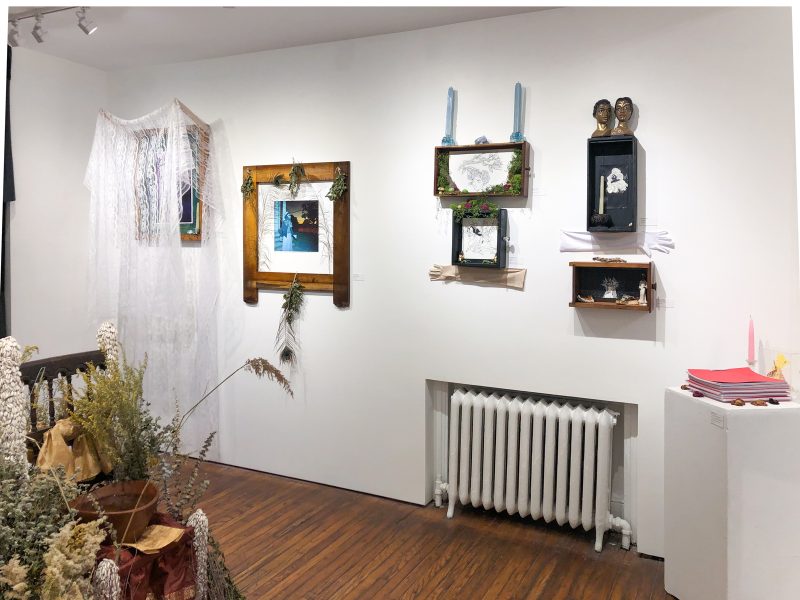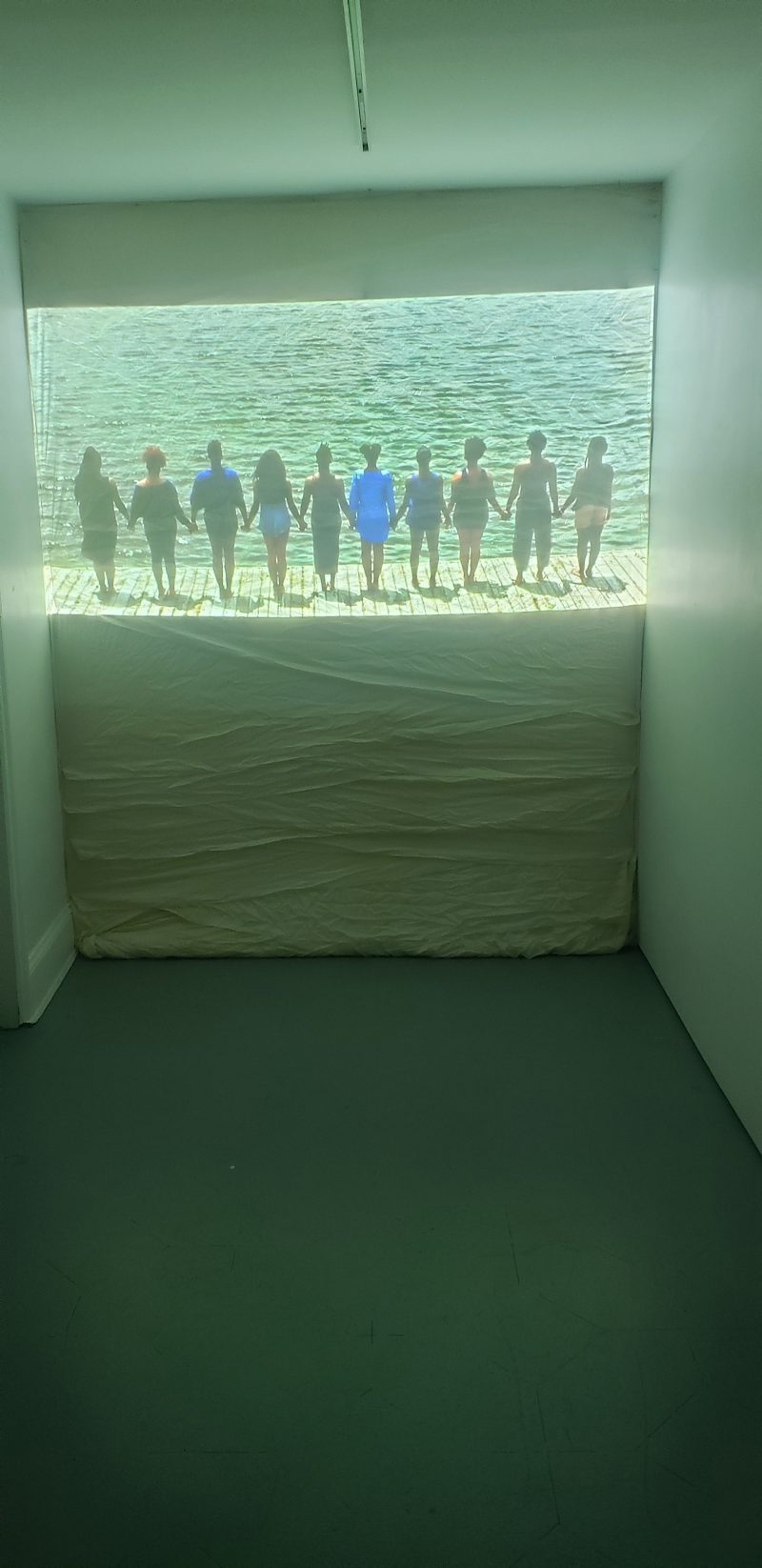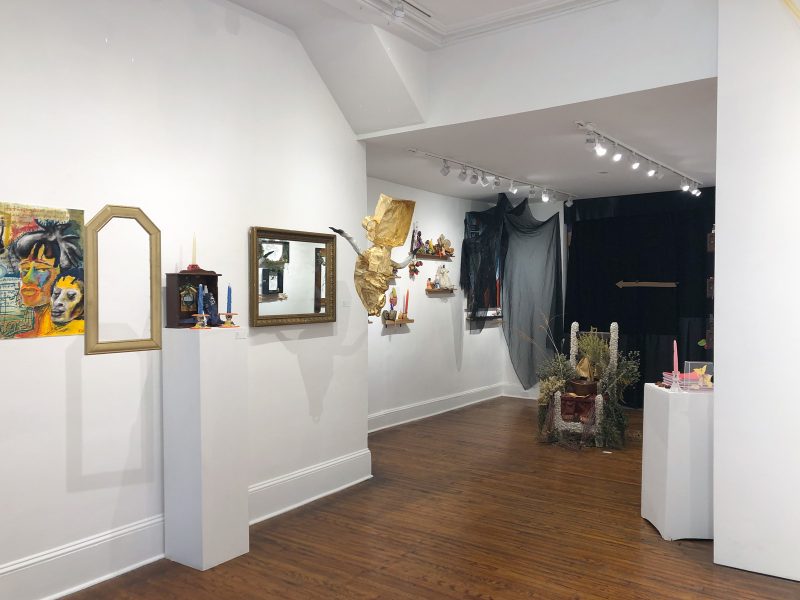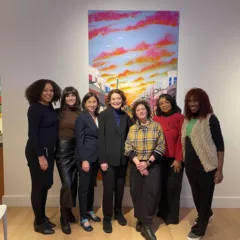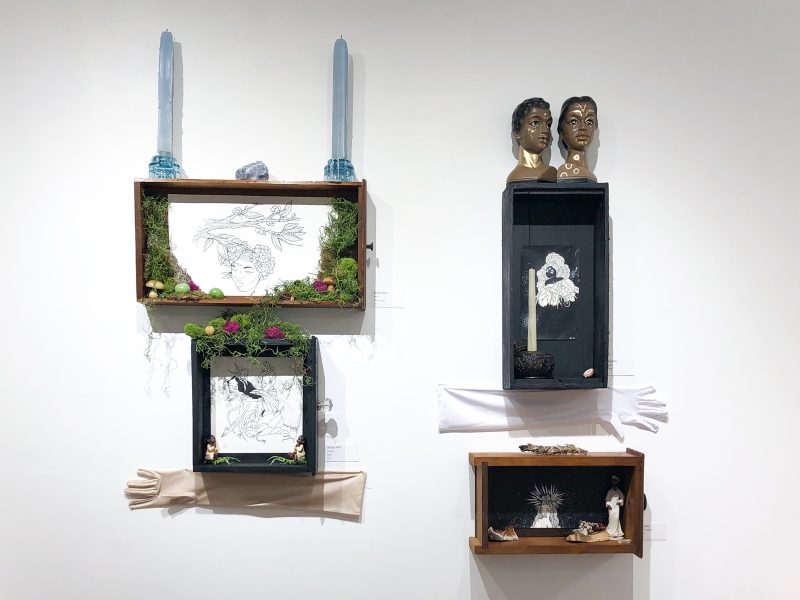
The work of Malachi Lily exists in a universe of dreams, fantasy on display as a lived, embodied experience. The Philadelphia artist mixes mediums in their own work: cut and paste collage, elaborate costuming, ink and paper drawings are all used to create an empowering vision for marginalized people that belies the often suffocating reality of their lives. With Temple of Sirius, a group exhibition curated by Lily through their Hawkmoth Events imprint at The Da Vinci Art Alliance (DVAA), a gallery tucked snugly into a row-home-like structure at 704 Catherine Street in South Philadelphia, Lily’s vision has a temporary home.
On the DVAA website, Temple of Sirius is described as “a sacred site of Black Divinity” where “many deities have gathered [to] present their forms to you as Black bodies, sculpture, digital media, and the paper arts.” Entering the gallery is a transformative experience; a smudgy ink drawing from Komikka Patton on long, off-white parchment graces the wall. It’s a drawing of three masks and hands hovering over concentric circular diagrams that look like tree rings. Just below the parchment is a scrawl of words reminding us that “We offer ourselves to you, you offer yourself to us, and in the end we are just each others”. As cryptic as that reads, no statement could be expressed to better relay the sentiment of inclusion by ritual that Temple provides.
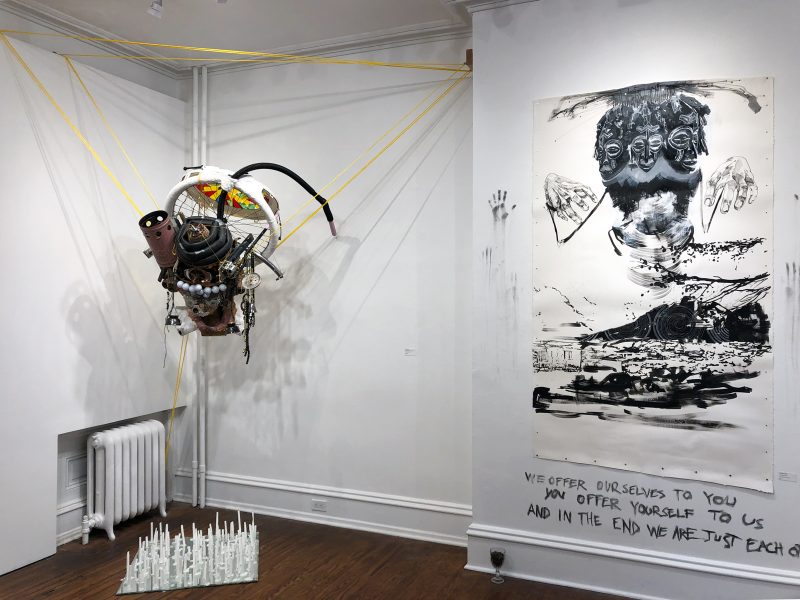
Alex Farr’s collages of feminine, black presences flanked by colorful ephemera and jeweled cut-outs shaped to look like traditional African attire are pieces that hover over altars adorned with candlewicks that spill over wooden planks and turned over jewel boxes that re-appropriate a grandmotherly spirituality. Alexander Newman’s eclectic worship space presents dreamlike photographs as elegiac altars that reshape Black masculinity. Here naturalistic forms of bodies perceived as Black and male aren’t so much rendered, their photos not so much developed–the subjects shimmer into existence, wrapped in golden, transparent shrouds.
While not all of the work is as bright and beholden to a kind of reinvigorating Afrofuturism, the notion of empowerment and ritual is shared collectively by the majority of the works. Catherine Feliz’s “You Will Survive This Rape Trial” is a bound zine, itself left in stacks on an altar for the viewer’s perusal, as a means of combating trauma through digital, internet printouts and brave, celebratory writing. In the audio-visual room, Vitche Boule-Ra’s dark, minimalist soundscapes of percussive metal and incanting tape loops scratch their way over equally minimalist images. As the videos loop, those austere moments give way to the ghost-like, powerfully playful of Shanel Edwards work–dancing and videography that explodes into cosmic moments that feel like outtakes from Daughters of the Dust in their ability to capture both the surreality and joy-despite-struggle of Black diaspora. In the film, figures that move like water are often surrounded by it, facing it; a reminder of both the horrors and joys these natural, life-giving bodies represent.
The explanation for the event further reads: “The Temple of Sirius is a sanctuary in honor of African astrological ancestry, our divine present, and the future we are crafting, all existing in one moment. This exhibition is a declaration, a war-cry, and a lullaby,” an affirming statement for both the viewer and the curator Lily themself, a tireless worker whose spirited existence has given Philadelphia’s art community more than just a glimpse of possible futures, but with Temple of Sirius, a template and its accompanying rituals to bring those futures into existence.
More Photos
